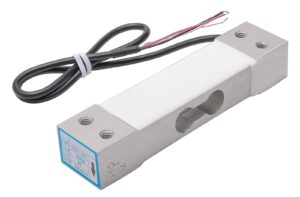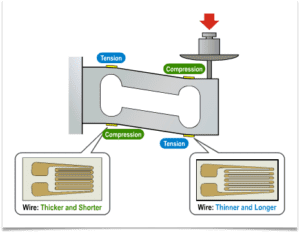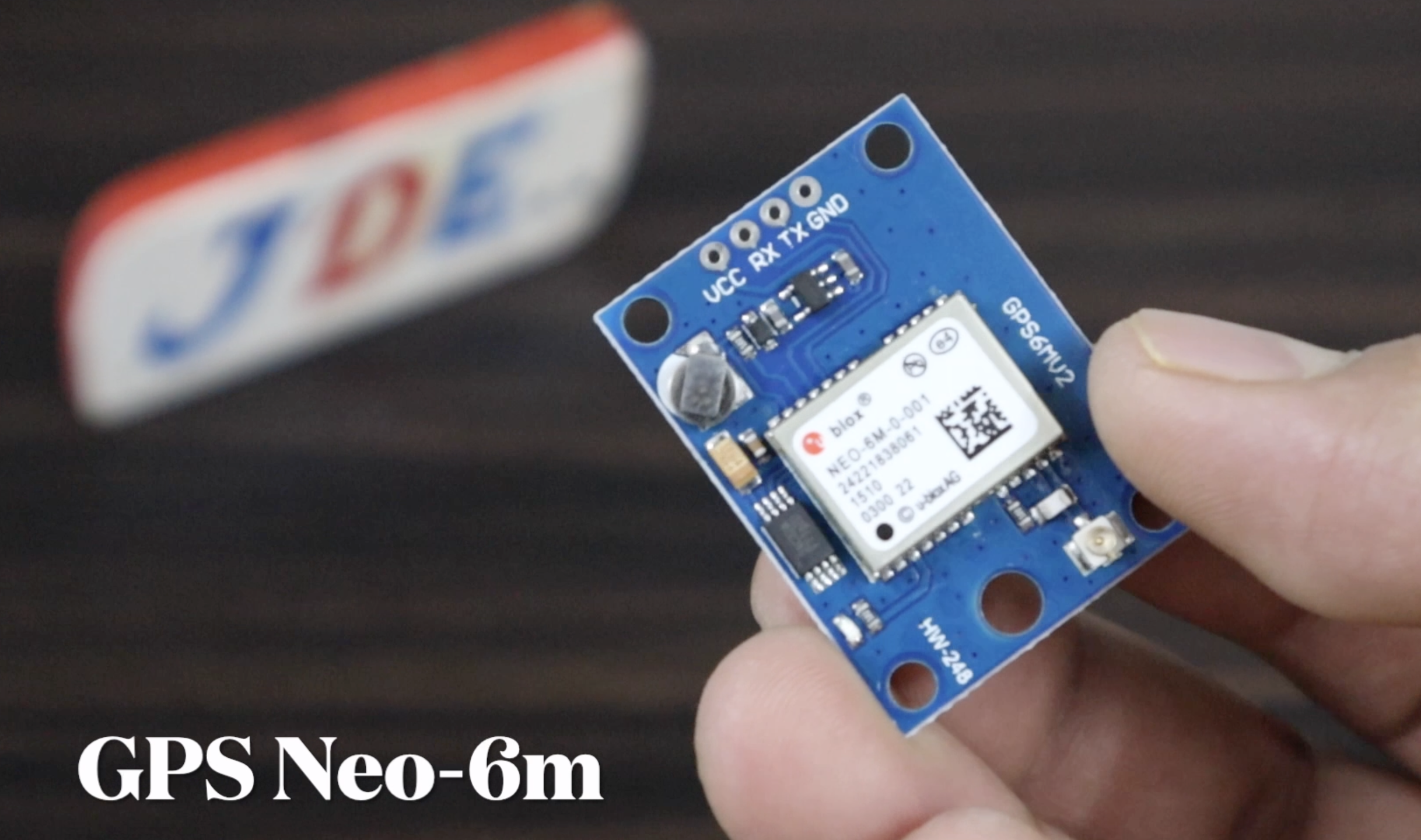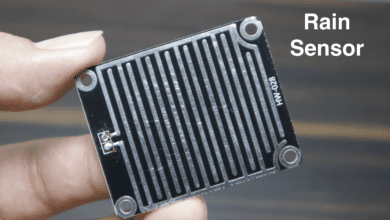
Introduction
Load Cell: A load cell is a device used to measure force or weight. It is commonly used in various industrial and commercial applications, such as weighing scales, material testing machines, and force measurement systems. The load cell converts the applied force into an electrical signal that can be measured and interpreted.
HX711 Module: The HX711 module is an electronic component commonly used with load cells to interface them with microcontrollers. It acts as an analog-to-digital converter specifically designed for load cell applications.
Principle of Operation
Load Cell: The working principle of a load cell involves strain gauges, which are small sensors that change their electrical resistance when subjected to mechanical strain. The load cell contains one or more strain gauges that are strategically placed to detect the deformation caused by the applied force.
HX711 Module: To use the HX711 module, the load cell is connected to the module’s input terminals and the module is connected to a microcontroller using standard communication protocols such as I2C.
Specifications Load Cell & HX711 Module
Load Cell Specifications
-
- Capacity: measured in units such as kilograms (kg).
- Sensitivity: This indicates the change in electrical output for a given change in force or weight. It is usually specified as millivolts per volt (mV/V) or per unit force/weight.
- Excitation Voltage: The load cell requires an excitation voltage to operate properly. This is the voltage supplied to the load cell to power it and generate the electrical output. It is typically specified in volts (V) or millivolts (mV).
- Output Signal: The load cell generates an electrical output signal proportional to the applied force or weight. Common output types include analog voltage (mV), current (mA), or digital signals such as I2C or SPI.
- Accuracy: This represents the level of precision and correctness in the load cell’s measurements. It is usually expressed as a percentage of the full-scale reading or as a specified number of digits.
- Linearity: Linearity refers to how closely the load cell’s output follows a straight line in response to a change in force or weight. It is typically specified as a percentage of the full-scale output.
- Environmental Conditions: Load cells may have specifications regarding temperature range, humidity, and other environmental factors that can affect their performance and longevity.
HX711 Module Specifications
-
- Resolution: This indicates the smallest change in weight or force that the HX711 module can detect and convert into a digital value. It is typically specified in bits or digits, such as 24-bit resolution.
- Programmable Gain: The HX711 module often includes a programmable gain amplifier (PGA) to adjust the amplification of the load cell’s signal. The gain can be adjusted to accommodate different load cell sensitivities and maximize the dynamic range.
- Input Voltage Range: 5v.
- Communication Interface: I2C and SPI
- Operating Voltage: The HX711 module requires a specific operating voltage for its internal circuitry. It is usually specified in volts (V), and it’s important to provide the correct voltage to ensure reliable performance.
- Sample Rate: The sample rate refers to how quickly the HX711 module can take measurements and provide updated weight or force values. It is typically specified in samples per second (SPS) or conversions per second (CPS).
Advantage of Load Cell & HX711 Module
Load Cell
- High Accuracy: Load cells are designed to provide accurate and precise measurements of force or weight. They offer high sensitivity and low hysteresis, resulting in reliable and consistent readings.
- Wide Range of Capacities: Load cells are available in various capacities, allowing them to measure a wide range of forces or weights. From small loads in grams to heavy loads in tons, load cells can be selected based on specific application requirements.
- Compact and Versatile: Load cells are compact in size, making them easy to integrate into different systems or structures. They can be used in various industries such as manufacturing, transportation, healthcare, and agriculture.
- Durable and Long-Lasting: Load cells are designed to withstand harsh environments and repetitive loading. They are typically made from robust materials such as stainless steel or aluminium, ensuring durability and longevity.
- Easy Installation: Load cells can be easily installed and connected to measurement systems. They often have standardized mounting holes or interfaces, allowing for straightforward integration into existing setups.
HX711 Module
- Precise Analog-to-Digital Conversion: The HX711 module provides high-resolution analog-to-digital conversion, allowing for accurate and precise digital readings of the load cell’s output. It ensures minimal loss of information during the conversion process.
- Programmable Gain Amplification: The module includes a programmable gain amplifier (PGA) that enables adjusting the amplification of the load cell’s signal. This feature allows optimizing the module’s sensitivity to match the specific requirements of different load cells.
- Noise Filtering
- Low Power Consumption
Disadvantage of Load Cell & HX711 Module
Load Cell
- Sensitivity to Overload: Load cells have a maximum capacity beyond which they can be damaged or provide inaccurate readings. Applying loads exceeding the load cell’s capacity can lead to permanent deformation or even failure. Care must be taken to ensure that the load stays within the load cell’s specified range.
- Calibration and Maintenance: Load cells require periodic calibration to maintain accurate measurements. Calibration ensures that the load cell’s output corresponds correctly to the applied force or weight. Additionally, load cells may require regular maintenance to prevent factors such as dirt, corrosion, or temperature changes from affecting their performance.
HX711 Module
- Limited Input Range: The HX711 module has a specific input voltage range that must be adhered to for proper operation. Exceeding this range can cause damage to the module or result in inaccurate readings. It is essential to ensure the load cell’s output voltage falls within the specified input range.
- Integration Complexity: Integrating the HX711 module into a system requires knowledge of communication protocols such as I2C or SPI. Some level of programming and circuitry knowledge is necessary to correctly configure and interface the module with microcontrollers or other digital systems.
Application of Load Cell & HX711 Module
- Industrial Weighing Scales: Load cells combined with HX711 modules are widely used in industrial weighing scales for precise weight measurements.
- Material Testing: Load cells and HX711 modules are used in material testing machines to measure forces during tension, compression, or bending tests. These machines are used in industries like construction, aerospace, automotive, and research laboratories.
- Process Control: Load cells and HX711 modules are used in process control systems to monitor and regulate the weight or force applied in manufacturing processes. Examples include dosing systems, filling machines, and assembly line control.
- Load Monitoring: Load cells with HX711 modules are used to monitor loads on structures such as bridges, cranes, and elevators. They provide valuable data for safety, maintenance, and weight distribution analysis.
Example With Arduino
Circuit Diagram
Code with 16×2 LCD Display
|
1 2 3 4 5 6 7 8 9 10 11 12 13 14 15 16 17 18 19 20 21 22 23 24 25 26 27 28 29 30 31 32 33 34 35 36 37 38 39 40 41 42 43 44 45 46 47 48 49 50 51 52 53 54 55 56 57 58 59 60 61 62 63 64 65 66 67 68 69 70 71 72 73 74 75 76 77 78 79 80 81 82 83 84 85 86 87 88 89 90 91 92 |
#include <LiquidCrystal.h> LiquidCrystal lcd(7, 6, 5, 4, 3, 2); #define DT A0 #define SCK A1 #define sw 9 long sample = 0; float val = 0; long count = 0; unsigned long readCount(void) { unsigned long Count; unsigned char i; pinMode(DT, OUTPUT); digitalWrite(DT, HIGH); digitalWrite(SCK, LOW); Count = 0; pinMode(DT, INPUT); while (digitalRead(DT)) ; for (i = 0; i < 24; i++) { digitalWrite(SCK, HIGH); Count = Count << 1; digitalWrite(SCK, LOW); if (digitalRead(DT)) Count++; } digitalWrite(SCK, HIGH); Count = Count ^ 0x800000; digitalWrite(SCK, LOW); return (Count); } void setup() { pinMode(SCK, OUTPUT); pinMode(sw, INPUT_PULLUP); lcd.begin(16, 2); lcd.print(" Weight "); lcd.setCursor(0, 1); lcd.print(" Measurement "); delay(1000); lcd.clear(); calibrate(); } void loop() { count = readCount(); int w = (((count - sample) / val) - 2 * ((count - sample) / val)); lcd.setCursor(0, 0); lcd.print("Measured Weight"); lcd.setCursor(0, 1); lcd.print(w); lcd.print("g "); if (digitalRead(sw) == 0) { val = 0; sample = 0; w = 0; count = 0; calibrate(); } } void calibrate() { lcd.clear(); lcd.print("Calibrating..."); lcd.setCursor(0, 1); lcd.print("Please Wait..."); for (int i = 0; i < 100; i++) { count = readCount(); sample += count; } sample /= 100; lcd.clear(); lcd.print("Put 100g & wait"); count = 0; while (count < 1000) { count = readCount(); count = sample - count; } lcd.clear(); lcd.print("Please Wait...."); delay(2000); for (int i = 0; i < 100; i++) { count = readCount(); val += sample - count; } val = val / 100.0; val = val / 100.0; lcd.clear(); } |
Conclusion
The load cell measures force or weight by converting it into an electrical signal, and the HX711 module interfaces with the load cell to amplify and digitize the signal for use in digital systems. Together, they form a reliable and accurate solution for measuring and monitoring force or weight in a wide range of applications.
Sensor









